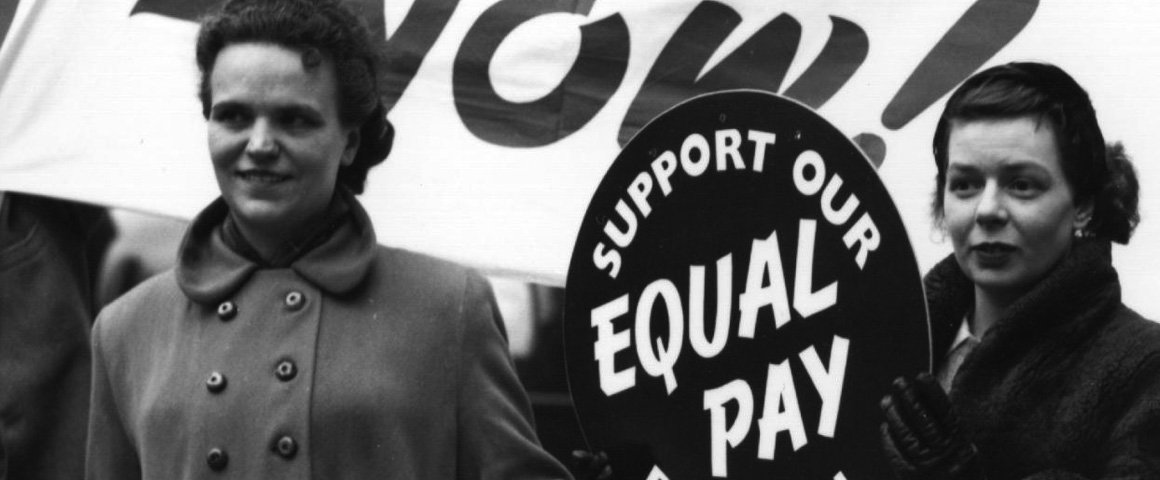By Saleh Waziruddin
Even if women worked the same exact same jobs as men, 77% of the gender pay gap would persist, according “Women and Paid Work”, a Statistics Canada report by Melissa Moyser (PhD), published on International Women’s Day as part of the series “Women in Canada: A Gender-Based Statistical Report”.
Women are paid 87 cents for every dollar men earn per hour, but this would be as much as 97 cents if women were paid the same as men within the same occupation (not just industry). In manual labour jobs, men are paid $7.24 more per hour, but even in predominantly female jobs women were paid $4.60/hour less than men for the same work.
The report recognizes that most of the gender pay gap is from patriarchy directly, much more than from the gendering of labour under capitalism into predominantly male and female jobs and industries. This is also confirmed by a 2015 study by Tammy Schirle which showed the gender pay gap within provinces was mostly due to the gap within the same occupation in each province, rather than the difference between provinces in industries and jobs.
A 1996 study by Michael Kidd and Michael Shannon showed the more detailed the job classification statistics come from, the greater the gender pay gap. They concluded the gap cannot be explained by the individual or personal characteristics of the workers themselves, suggesting it is due to patriarchy directly.
The Statistics Canada report also shows that in large cities, high day-care costs are directly associated with large employment gaps between men and women. Toronto, with the highest day-care costs in the country, had a gender employment gap of 12.6%, and in Vancouver it was 11.8%. The effect is more obvious when we consider Quebec has a low-cost publicly funded childcare program, with Montreal having an employment gap of 6.4%. In Ottawa the employment gap is 7.3%, but across the river into Quebec the gap is only 2.6% in Gatineau.
Women had twice as many absences from work as men because of family responsibilities. Over the working life this adds up to an average of one and a half years away from work for women, but only eight months for men.
Three-quarters of part-time workers are women, and one-quarter of them said caring for children was the reason, compared to only 3.3% for men. The proportion of workers working more than one job within each gender has flipped from 1976. Workers with multiple jobs went down by almost half from 2.8% to 1.7% for men, but for women this almost doubled from 2.8% to 4.5%. Almost 40% of women with multiple jobs have a part-time as their main job, but this is less than 20% for men.
The report also shows the importance of access to post-secondary education for women’s equality. The gap in employment rate between having a high-school vs. a college degree was 13.8% for women but just 8% for men.
Statistics Canada found the gendering of jobs is uneven and has gotten worse. Since 1976, women who work are twice as concentrated into predominantly female jobs than men are into predominantly male jobs. The proportion of women who are in predominantly female jobs has almost doubled since 1976, from 35% in to 60%. In computer science jobs the proportion of women has actually decreased since 1987.
Women are more likely to work in jobs which pay the lowest 20% of wages than in jobs with the top 20% of wages, and the opposite is true for men. Even when they require the same skill level (education and training), predominantly male jobs have higher wages than predominantly female jobs, often by more than $4 an hour.
The report recognizes that men in predominantly female jobs are often in a “glass escalator” (“glass” because it is “invisible”, “escalator” because men are promoted even when they don’t need to be). This phenomenon was first recognized in a 1992 paper by Christine Williams. Subsequent research shows this mainly applies to white men, heterosexual or not openly queer, with citizenship. At the other end of the spectrum, the statistics for women’s wages don’t reflect the lower wages of women of colour, openly queer women, transwomen, and non-citizen women. This means the inequality within predominantly female jobs is higher than appears from statistics which look at gender, without further breaking groups down by race, sexuality, citizenship, or transgender status.
A 1996, comparison of the gender pay gap between Canada and Australia in another paper by Michael Kidd and Michael Shannon, showed that the gap was much narrower in the latter country, both due to its stronger labour movement, but also because equity was driven pro-actively rather than cases-by-case as in Canada. At the time of the study 80% of Australian workers’ wages were covered by decisions made by federal tribunals.
A 1994 study by Denise Doiron and Craig Riddell found that the decrease in the gender unionization gap in Canada between 1981 and 1988 prevented an increase in the gender pay gap for all workers (with or without a union) of 7 percent. This means without the increased unionization of women, all women would have a worse gender pay gap today than it was back in the early 1980s.




